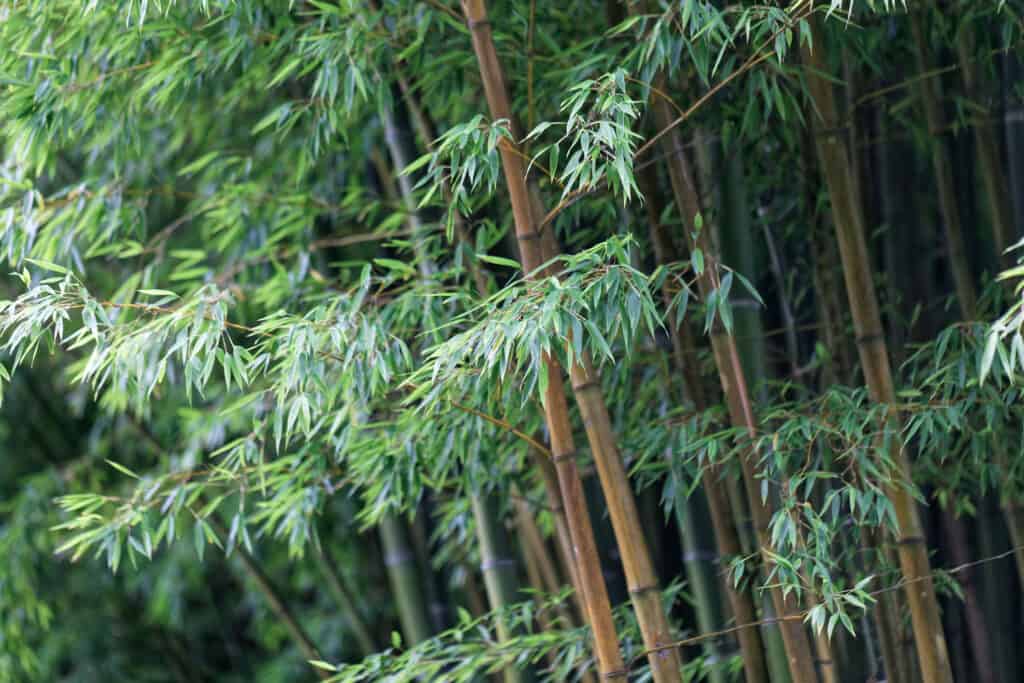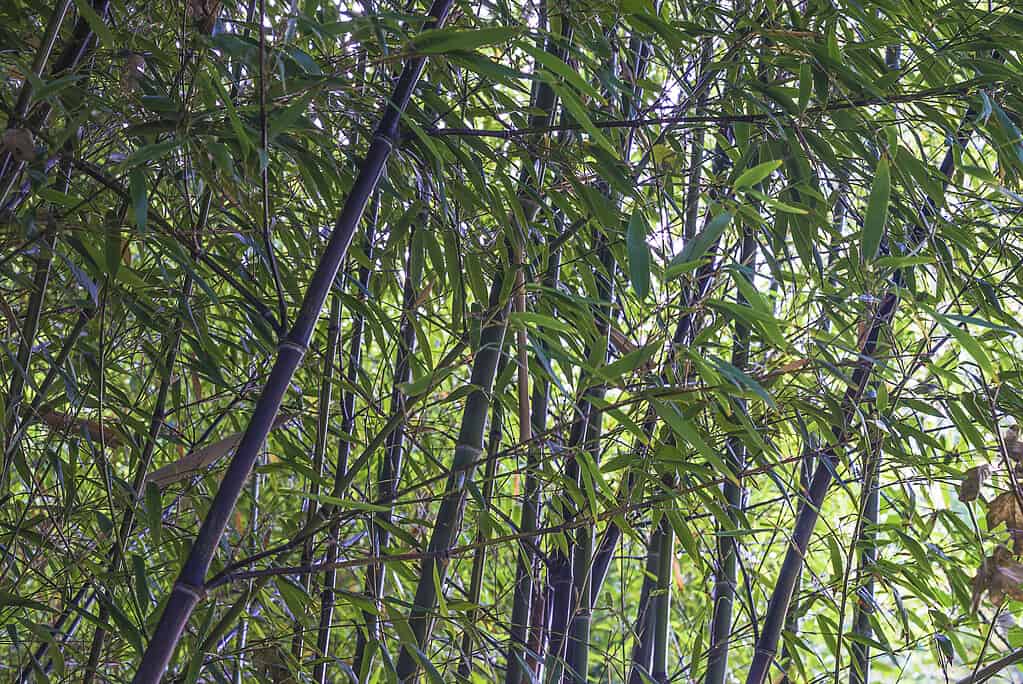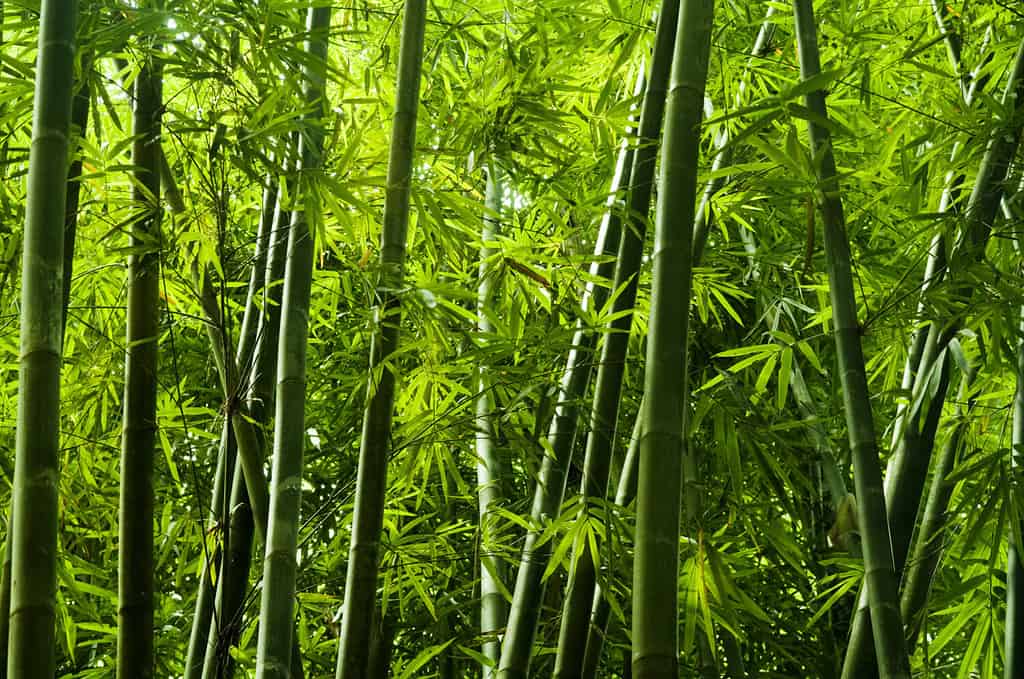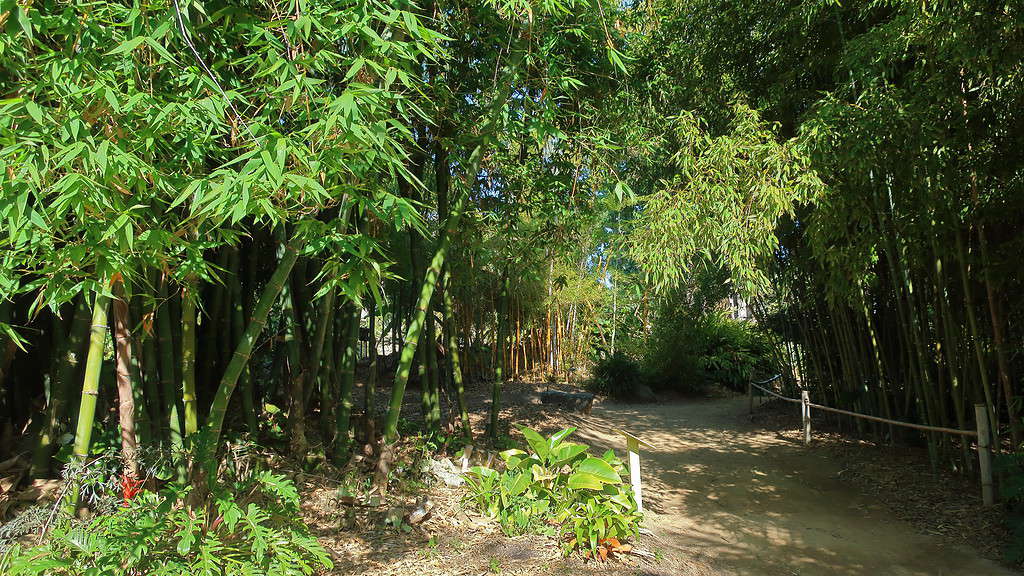Where to Find Bamboo in Louisiana
Though bamboo does not grow natively in Louisiana, it can grow successfully in this southern state, given the right conditions. Louisiana’s warm, humid climate can be well-suited to cultivating many different bamboo species. However, it is always a good idea to consult a local horticulturist or plant expert to understand which bamboo species will thrive in Louisiana’s particular environment and climate conditions.
In general, people can grow bamboo without too much extra care or attention. Many aspects of Louisiana’s climate make it particularly suitable for growing bamboo. The many different bamboo species will thrive if planted in soil rich in organic matter, as long as the plants have good sunlight, well-draining soil, and protection from the harshest elements. People grow bamboo across North America for its value as an ornamental plant and its many commercial uses as a sustainable, renewable resource. This can include Louisiana. However, there are a few factors you should keep in mind before adding a bamboo species to your home garden.
This article will take you through the challenges and potential benefits of bamboo in Louisiana. Additionally, you will discover several places, including botanical gardens and plant nurseries, where you can find bamboo growing successfully in Louisiana today.

Many aspects of Louisiana’s climate make it particularly suitable for growing bamboo.
©Toibkk/Shutterstock.com
Challenges of Growing Bamboo in Louisiana
There are several challenges to keep in mind before planting bamboo in Louisiana. First, Louisiana has a very hot and humid climate. While this may be suitable for planting bamboo, it can also provide a favorable environment for fungal diseases and pests. These can threaten the health and longevity of your bamboo. Second, Louisiana is prone to flooding. Floods can damage and destroy bamboo plants. To prevent potential harm, choose to plant your bamboo in a place that can be protected from heavy rain. Additionally, try to find a location that has well-draining soil. If part of your garden or yard is prone to becoming water-logged, that is probably not an ideal place for planting your bamboo. Bamboo needs to grow in soil rich in organic matter that drains well. Since the soil conditions in Louisiana can vary greatly, test your soil before planting your bamboo.
Thirdly, bamboo can be an invasive species that threatens native plant life in a new ecosystem. Since it can grow and spread rapidly, it is important to actively monitor and manage your bamboo groves. You can take measures such as using barriers placed underground to contain and manage the spread of bamboo rhizomes.
Fourthly, and lastly, not all bamboo species will thrive in Louisiana’s climate. Do your research and choose a species that can adapt well to the local soil conditions, highly humid climate, and other environmental factors.

Since it can grow and spread rapidly, it is important to actively monitor and manage your bamboo groves.
©iStock.com/weisschr
How to Grow Bamboo in Louisiana
Keeping all of these factors in mind, you can certainly grow bamboo successfully in Louisiana. Bamboo plants are very resilient and adaptable. Though they are native to Asia, particularly China, bamboo plants grow successfully in a broad range of climates and soils, including in states across the United States. You may find growing bamboo in Louisiana to be challenging, but you can overcome the challenges by following the best practices of bamboo cultivation.
Several species do grow well in Louisiana. These include golden bamboo (Phyllostachys aurea), moso bamboo (Phyllostachys edulis), black bamboo (Phyllostachys nigra), dwarf bamboo (Pleioblastus pygmaeus), and river cane (Arundinaria gigantea). Each of these species possesses individual qualities that can be well-suited to the unique climate and soil conditions in Louisiana. In addition to these, many experts recommend that any species you choose be a clumping species of bamboo. This can help to reduce the risk of your bamboo grove growing out of control and sending up shoots that invade other parts of your home landscape.

Several species do grow well in Louisiana. These include black bamboo.
©iStock.com/stsvirkun
Benefits of Growing Bamboo in Louisiana
Despite the challenges, there are numerous benefits to growing bamboo in Louisiana. In addition to its aesthetic value, as an attractive ornamental plant, bamboo brings tangible benefits to the landscapes where it grows. For example, bamboo’s dense root systems can stabilize hill soil and prevent erosion. As a fast-growing plant, bamboo can also absorb a large amount of carbon dioxide from the atmosphere. Bamboo groves can be a welcoming habitat for many different species, including birds, animals, and insects. Additionally, bamboo is a useful and sustainable resource. Bamboo has immense commercial value and can be material for many different products, from furniture to textiles. Increasingly, bamboo has become an alternative to less environmentally-friendly materials, such as plastic. Because of that, bamboo is now a material used for everything from cutting boards to apparel to eating utensils.
You can weigh these benefits against the potential challenges and drawbacks of bamboo. In general, keep in mind that despite its aesthetic appeal, bamboo is a potentially-invasive species that can threaten local ecosystems and quickly grow out of control if not monitored closely.

Bamboo has immense commercial value and can be material for many different products, from furniture to textiles.
©Phuwadon Phichairat/Shutterstock.com
About Bamboo
Bamboo originates in Asia. There are between 1,000 and 2,000 species of these grass plants. These species are grouped into more than 100 genera of the Poaceae family. These are within the Bambusoideae subfamily. Bamboo species grow to different sizes, vary in color and appearance, grow well in different environments, and have different growth patterns. This range of needs and qualities makes different bamboo species suitable for a broad array of ecosystems and allows bamboo plants to grow well across the globe.
Because bamboo does not grow natively in North America, including U.S. states such as Louisiana, it can spread quickly. This makes it a potentially invasive species that can threaten local plants and the balance of the native ecosystem. The danger of this is that bamboo may crowd out native plants, disrupt the patterns of wildlife, or even damage property such as home foundations or underground pipes. Because of this, certain areas might even have limitations on whether bamboo may be planted and which types.

Bamboo species grow to different sizes, vary in color and appearance, grow well in different environments, and have different growth patterns.
©szefei/Shutterstock.com
Bamboo Arboretums and Gardens in Louisiana
If you wish to see bamboo growing in Louisiana, a great way to do so is by visiting a local botanical garden or plant nursery. To find bamboo in Louisiana, look into your own local botanical garden or commercial garden center. These places may have bamboo on display. This article will list multiple botanical gardens in Louisiana. However, this list is certainly not exhaustive. Also, keep in mind that specific garden displays are subject to change. New exhibits are added all the time, and old ones are cycled out. Check out the roundup below to find some places where you may find bamboo growing in Louisiana, but don’t be afraid to do your research too!
Many botanical gardens and plant nurseries change their hours based on the season. This may also cause the admission fees to change, as some of these botanical gardens are free while others charge admission. Many of these places are also educational facilities that specialize in learning events or opportunities to engage in specialized training. Keeping all of these factors in mind, it is a good idea to check online before visiting. Doing so will allow you to check that the information listed in the sections below is up-to-date. From there, you can schedule your first visit accordingly.

This 10-acre botanical garden contains over 2,000 different plants from around the world.
©Liz Wood Roaming with Red/Shutterstock.com
New Orleans Botanical Garden
The New Orleans Botanical Garden is located in City Park, a neighborhood in New Orleans. This 10-acre botanical garden contains over 2,000 different plants from around the world. Billed as a serene retreat amid the hustle and bustle of the urban community, this city park is a shining example of public garden design from the Works Progress Administration (WPA) and a place to see the lasting influence of early 20th-century talents in architecture, landscaping, and sculpture. The New Orleans Botanical Garden offers specialty gardens where visitors may learn about local history, science, plants, and cultural life. All year round, the gardens host events and a visual feast to learn about and enjoy all kinds of plant life and outdoor landscaping.
Among the gardens is the Yakumo Nihon Teien Japanese Garden. This Japanese Garden is a natural setting to showcase Japanese arts and culture, including bonsai, ikebana, and sado tea ceremonies. To increase awareness and appreciation of Japanese culture, art, and plants, this garden is named after the writer Koizumi Yakumo, who lived in Matsue, Japan, and New Orleans. The Japanese Garden is also a site where you can see thriving bamboo plants and take in the serenity of Japanese landscaping.
The New Orleans Botanical Garden is open Wednesday, Thursday, and Sunday from 10 a.m. to 4:30 p.m. and on Friday and Saturday from 10 a.m. to 4 p.m. Admission costs $12 for adults, $6 for children aged 3 to 12, and is free for children under the age of 3. Admission is also free to Louisiana residents on Wednesday – but bring your state ID!
Jungle Gardens
Jungle Gardens is a 170-acre botanical garden and bird sanctuary on Avery Island, Louisiana. This unique attraction was established in 1872 by a notable Arctic explorer, naturalist, and conservationist named Edward Avery “Ned” McIlhenny. This famous explorer and environmentalist converted his private home on Avery Island into the public-facing Jungle Gardens. Since then, Jungle Gardens has lived on as a noted tourist destination and refuge for local wildlife. Today, visitors can see a bird colony called “Bird City,” which is full of snowy white egrets and other water birds. Because Jungle Gardens is a wildlife refuge, visitors may also see a variety of animal species, including alligators, deer, raccoons, and some other species that pass through the island: bears, wild cats, coyotes, rabbits, otters, and many others.
Among the garden attractions is also one of the oldest timber bamboo groves in the entire United States. The founder, Ned McIlhenny, planted over 60 different varieties of bamboo in Jungle Gardens. He nurtured these plants and experimented with and cultivated them. As an early believer in the usefulness of bamboo, Ned McIlhenny was ahead of the curve: today, many of his views are now shared by modern permaculturists who share his original vision for the benefits of bamboo.
Jungle Gardens is open daily from 9 a.m. to 5 p.m. Self-guided tours do not require a reservation. Tickets for adults and youth aged 13 and older are $9.50, children aged 5 to 12 are $6.50, and children aged 4 and under are free. Check out the website to learn more about the self-guided audio tours and options for walking, driving, or RV riding! Jungle Gardens also hosts Bird Tours, which allow bird watchers to enjoy a guided exhibition of the many birds living on the island. Bird Tours are by reservation and are available every day from 7 a.m. to 5 p.m.
Longue Vue House and Gardens
Longue Vue House and Gardens, in New Orleans, is eight acres of gardens and beautiful interiors masterminded by a 20th-century designer named Ellen Biddle Shipman. Originally a private estate, Longue Vue was once the home of Edith and Edgar Stern and is now open to the public as a memorial to their philanthropic legacies and commitment to social progress and communal healing through nature. The beautiful estate hosts programs for people of all ages, seasonal garden workshops, garden education for children, and event spaces for meetings and celebrations.
The Longue Vue House and Gardens are located at 7 Bamboo Road and consist of 14 garden areas among other structures. Among these garden, areas is a bamboo garden featuring several species of bamboo, including moso bamboo.
Longue Vue is open from Monday to Saturday from 9:30 a.m. to 5 p.m. Admission to the gardens is $10. Admission and a guided tour of the house are $25. Getting admission to both the gardens and the house is $30.
Louisiana State University’s Hilltop Arboretum
The Louisiana State University (LSU) Hilltop Arboretum is a collection of over 150 species of native trees, shrubs, wildflowers, and other plants. The 14-acre grounds are on a property formerly known as “Hilltop,” located six miles south of the central LSU campus in Baton Rouge. This arboretum is focused on education, outdoor learning, and protecting the natural environment. Visit at different times of the year to see what is in season! Each year, the Hilltop Arboretum hosts educational sessions on gardening and conservation topics, invites children and adults to participate in lessons about gardening, and gives kids the chance to enjoy the natural landscape.
The grounds include a vast collection of species, including rare and native tree species. These include beech, birch, box elder, cherry, fig, elm, hickory, Japanese maple, spruce pine, silver bell, sycamore, and many other trees. In addition to the extensive collection of trees, the grounds are home to a large bamboo grove. Visitors can cross a footbridge over a 20-foot-deep ravine, wander the grounds, and seek tranquility under tall trees. The bamboo grove is a peaceful place to listen to the wind and admire the tall bamboo stalks, escaping the busy city to enjoy the tranquil atmosphere, sunlight, and quiet.
The arboretum is open to the public seven days a week during the daylight hours from dawn to dusk. Admission is free to all.
Other Places to Find Bamboo in Louisiana

Beyond these botanical gardens and arboretums listed above, Louisiana is home to many other places where you can find bamboo thriving.
Beyond these botanical gardens and arboretums listed above, Louisiana is home to many other places where you can find bamboo thriving. In particular, many private homes and garden estates feature bamboo growing in large groves. Keep in mind Louisiana’s humid, subtropical climate and clay soil that can prove inhospitable to bamboo which requires well-draining soil.
Also, remember that some bamboo may spread out of control and be detrimental to the local ecosystem. Choose a species that is tolerant of high temperatures, Louisiana’s natural humidity, and the risk of occasional flooding or waterlogging. However, by talking with a local expert who knows the Louisiana environment, you can prepare to grow bamboo successfully without damaging the environment. One way to meet these experts is by visiting one of the garden locations listed above or reaching out to your local plant nursery or arboretum.
The photo featured at the top of this post is © Photo by David J. Stang, CC BY-SA 4.0
Thank you for reading! Have some feedback for us? Contact the AZ Animals editorial team.







